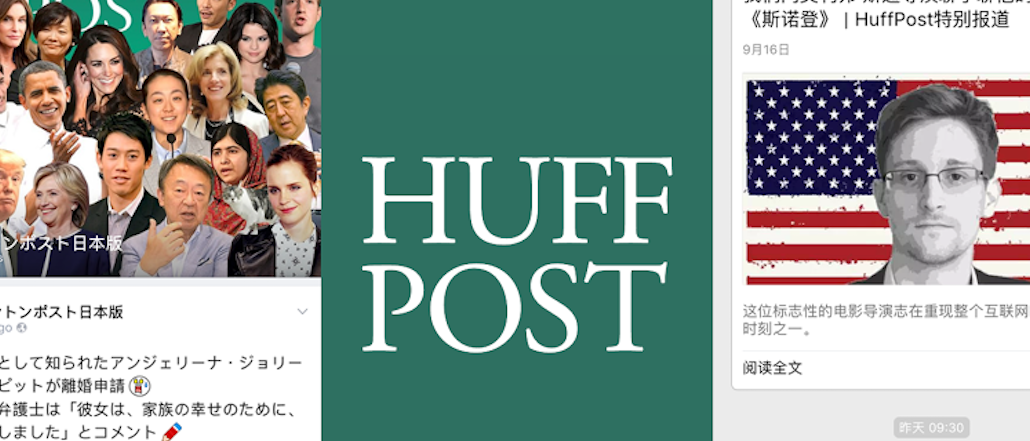Insights from CTV leaders at Dentsu, Horizon Media and more

Almost every major Western publisher wants to extend its reach internationally through popular foreign messaging apps like Japan’s Line and China’s WeChat. But unlike many media companies that simply repurpose their English content on these two platforms, Huffington Post has two accounts on each: One is in English, and the other is in the local language.

This arrangement helps overcome language barriers, and, most important, it allows the publisher to cater to different reading preferences, according to John Zhou, China Editor for Huffington Post. For instance, its English subscribers on WeChat love reading stories around lifestyle, entertainment and Asian Americans, while Chinese readers prefer deep analysis on current events translated from Huffington Post’s 16 global editions, he said.
And while videos are driving engagement on Line, they are not gaining much attention on WeChat. “It’s our understanding that WeChat users typically do not watch videos due to limited bandwidth and the fact that videos play with sound on by default,” he explained.
Huffington Post declined to release its views on WeChat. But on Line, its global English account has gained more than 340,000 followers since its launch in May of this year and received “high engagement on each post,” according to Christine Roberts, mobile editor for Huffington Post, while its Japanese Line account has already gained 30,000 followers since its debut last week.
The publisher posts a daily news digest of eight stories on its Japanese Line account and one to three stories on each of the other messaging accounts. Stories with a global focus tend to perform well, according to Roberts.
“We recognize that a great deal of news consumers in Asia are using messaging apps as their primary source for news,” she said. “This is really an effort to go where the readers are and engage with them on a daily basis.”

Compared to Line, WeChat seems to be a hard nut to crack for U.S. and European publishers. After all, they can easily gain followers on the Japanese messaging app. Aside from Huffington Post, Business Insider attracted 230,000 Line followers in just two weeks, for example. But few that have a presence on WeChat are willing to share their performance metrics on the platform.
Many publishers are using WeChat as an awareness-building tool at the moment, but they need to be aware that it’s hard to monetize the app down the road. For instance, Bomoda, which transitioned from a fashion publisher to a data intelligence business last year, used to generate between 25,000 views to more than 100,000 views on its lead and sub-articles on WeChat.
But Brian Buchwald, CEO for Bomoda, decided to sell its media business because the good traffic on WeChat couldn’t help the company grow. One obstacle was that publishers could only post once a day and thus serve a limited number of ads on WeChat.
“Payments were several thousand dollars for native advertising on a lead article [on WeChat],” said Buchwald. “But we were reaching a point of maximum scale in our efforts. Essentially pushing out fashion and beauty content once per day could only build a lifestyle business and not support building a large enterprise.”
More in Media

Ad Tech Briefing: The ‘plumbers’ posing as the unlikely saviors of the internet
After several false dawns, can Cloudflare’s ‘anti-AI scraping tool’ finally offer publishers a road to commercial redemption?

Generative AI, not ad tech, is the new antitrust battleground for Google
Global regulatory scrutiny is shifting from Google’s ad tech and search dominance to generative AI, as they aim to address the most pressing threats to publisher business models.

Yahoo takes cues from platforms as it offers more editorial control to creators
Through its creator program, Yahoo is evolving from its roots as a content aggregator and editorial publisher to more of a distribution platform for individual creators.





